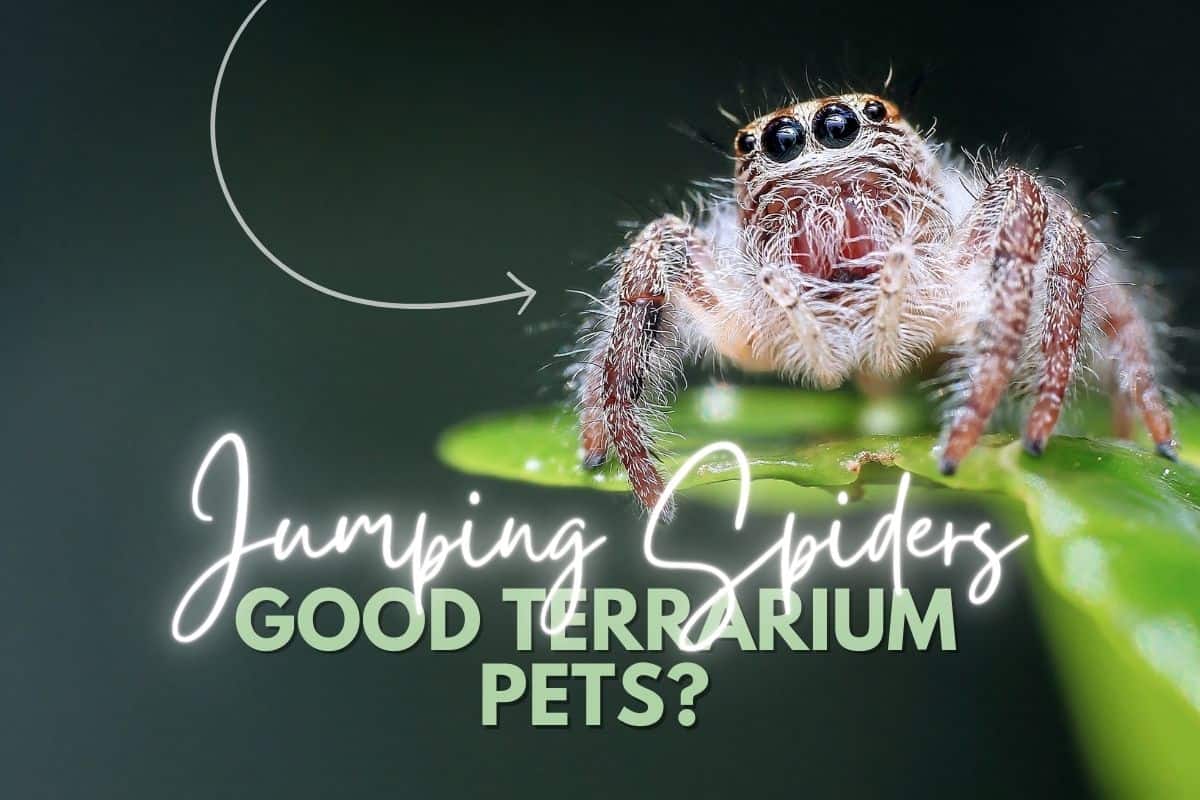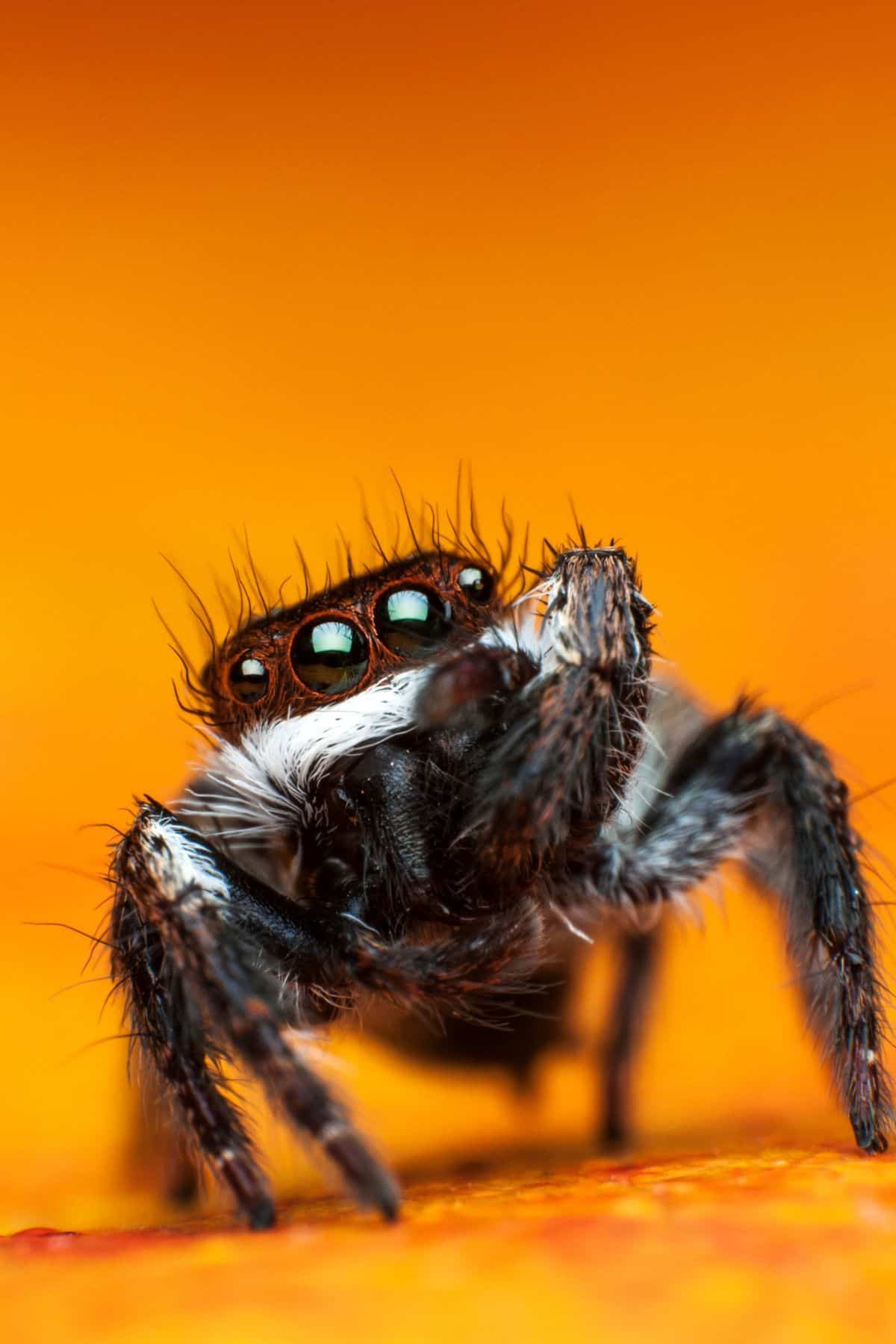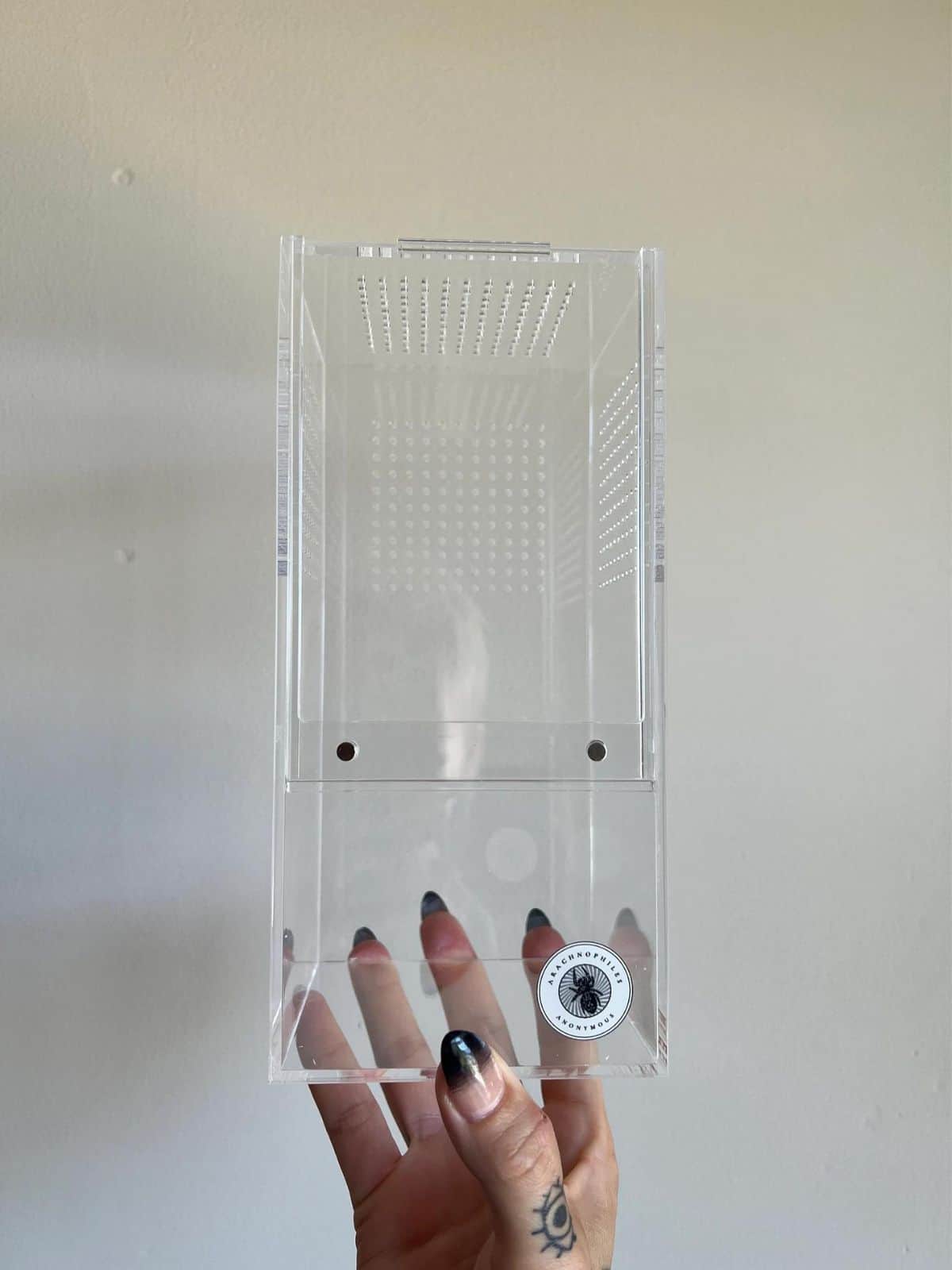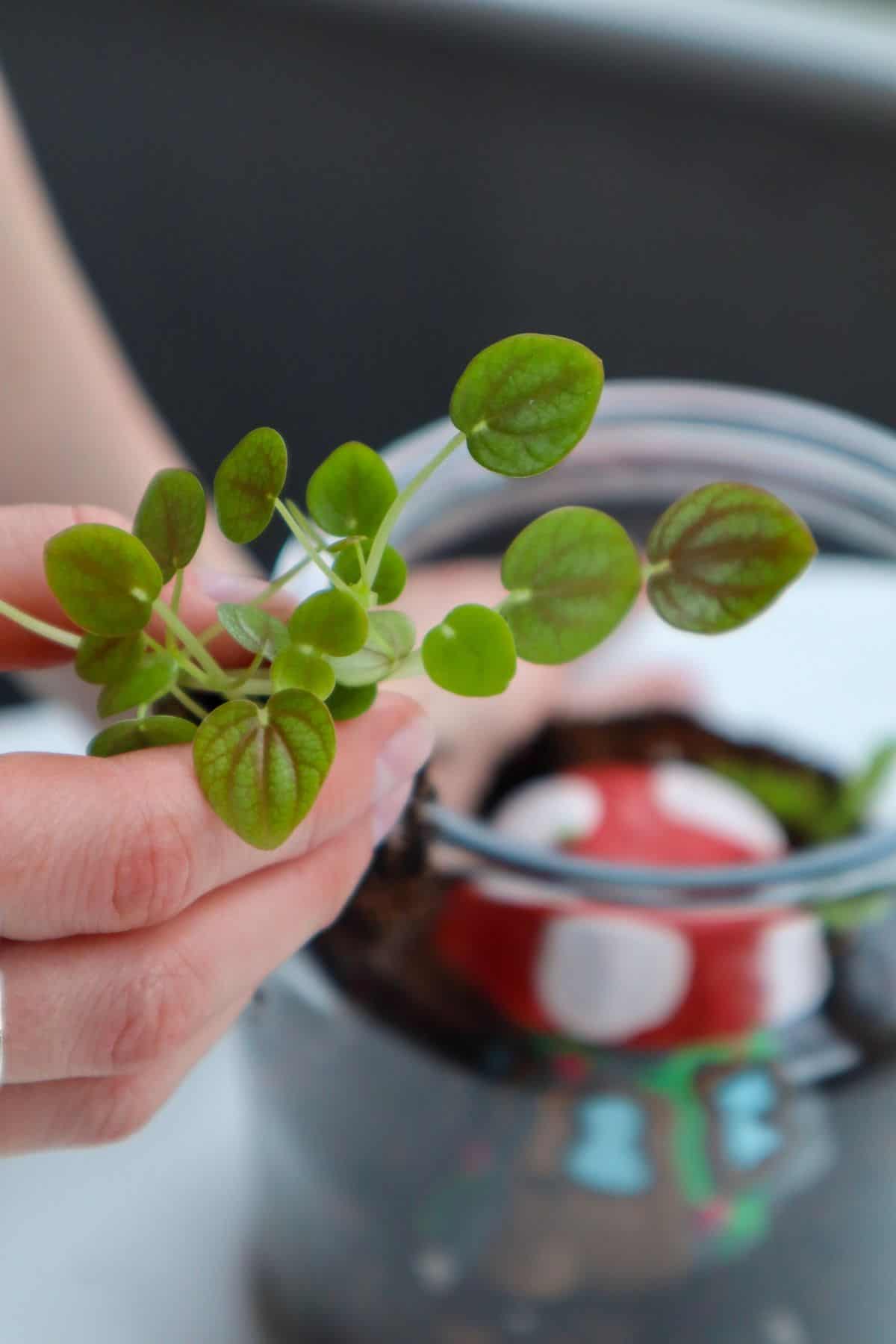Spiders aren’t everyone’s cup of tea, but jumping spiders have become an unlikely mascot for terrarium Tiktok of late, and I’m all for it.
With their tiny fuzzy bodies and (disproportionately) large goo-goo eyes, they’re undeniably cute. Though, maybe it’s their mannerisms and personality that makes them such interesting pets?
Docile, curious, and friendly – never words I thought I’d use about a spider, but that’s what I’m told…
In this article, we’re going to discuss the rise of jumping spider pets and their suitability in terrariums. Along with how to create the ideal terrarium setup for them should you be ready to make the leap.
Let’s jump to it!

Terrarium Tribe is reader-supported. When you purchase through links on our site, we may earn an affiliate commission (at no further cost to you). 💜
Why Get a Jumping Spider Pet?
Let’s be honest; there have to be some good reasons for keeping jumping spider pets.
How else could so many people overcome their fear of spiders through 30-second videos? They must have some uniquely attractive qualities that other spiders don’t – and that’s certainly the case.
After seeing Aerith (Ben Newell’s little jumping spider pet on TikTok) I knew I had to explore this trend further. Partly because she’s cute, partly because that’s a clear bridge to the terrarium world, and partly because I’m a huge Final Fantasy fan…
Fawning over spiders and video games aside, the terrarium setup that Ben prepared was fairly simple, too, so I can definitely see the appeal at first glance.
Let’s take a closer look.
- Fun personalities – This is the big one, for sure. Jumping spiders really do have a typical pet’s personality, and they’re incredibly disarming. Not quite in the same way as a dog or a cat, but they are curious and surprisingly expressive.

- Easy care – They don’t tend to have particularly complex care requirements as far as environment or feeding goes. They also don’t spin webs, so maintenance isn’t much of an issue either.
- Low risk – Sure, they do have fangs, and I’m sure it stings if it happens. However, according to WebMD, jumping spiders are harmless to humans. Which is good because they seem to like being handled.
- Cool factor – Ever seen a tiny spider leap dramatically across an enclosure to tackle its prey? Well, now’s your chance. These are the acrobatic daredevils of the spider world and they’re fascinating to watch.
As for cons, there aren’t any that I can think of, except for the fact they don’t live particularly long. You can expect them to live for up to a few years, so they’re low commitment in that sense.
Jumping Spider Terrarium Setup
Enclosure
Jumping spiders really are tiny, so they don’t need a vast terrarium setup for them to get lost in.
But they are very active creatures. So – relative to their size – they still need plenty of space to explore and hunt in. You’d be feeding them small flying insects, so there’s a certain degree of leaping to be had.
Plus, we need to remember that they are natural climbers.
So, opting for a taller setup is definitely a good idea.
As Serpa discovered in his jumping spider video, these spiders make their nests at the top of their enclosure. So front-opening containers are best (unless you like to be a regular homewrecker).
A vented acrylic enclosure like these two options would be absolutely perfect,

That said, there’s nothing to stop you from drilling some holes into any other appropriately sized/shaped container. Holes on the sides are best for cross-airflow.
Setup
Jumping spiders don’t appear to need a complex setup.
As I understand it, they’ll need bright (indirect) light so that they can hunt through the day. If you don’t have an appropriate spot in your home, a simple artificial lighting setup around/above the enclosure can help make sure you meet your spider’s needs.
Ideal temperature and humidity can vary according to species, so that’s for you to determine.
Hardscape is a must for all setups, though – in one form or another.
People enjoy adding all manner of weird and wonderful objects to their enclosure (just look at this cute little cat run come doll house!), but I still prefer the natural look, so I’d recommend some driftwood branches.
You can choose a type that fits your container size (e.g., Spiderwood for smaller spaces, Mopani Wood for larger, and Cork Bark for any size).
It serves a dual function in both elevating the visual experience and giving your spider something to climb.
On the substrate front, honestly, most sterile terrarium mixes (i.e., no fertilizers or natural insecticides) would be fine – whatever suits your plant choice.
Plants
Plants are probably the trickiest part of this terrarium setup for two main reasons.
- The ventilation holes in your container will make it hard to maintain super-high humidity levels. So, you’ll want to avoid plants that are particularly sensitive to humidity.
- Most of the care advice I’ve seen recommends misting your container down very lightly and infrequently so that puts high moisture plants off the cards, e.g., water-hungry ferns.
Lots of people seem to opt for fake plants, but my honor as a terrarium maker will not allow it.
Real planted terrariums just look better, right? It’ll give them more of a sense of their natural habitat, and it gives them plenty of places to hide and chill.
For me, I’d keep it simple with some drought-tolerant small foliage plants (e.g., Peperomia ‘Piccolo Banda’). But I’m told they prefer broad-leafed plants, so that should narrow things down.

Common Species of Pet Jumping Spider
Jumping spider species number in the thousands, so you might come across all manner of spiders in the wild. Honestly, It’s surprising how many keepers seem to catch their own pets in this space.
It’s something of a taboo practice in the reptile industry, but spiders are different, I guess.
All that said, there are two clear species that dominate the pet jumping spider market.
- Bold Jumping Spider (Phidippus audax) – Surprisingly named for their bold personalities rather than their bold, iridescent facial features. Works both ways, really.
- Regal Jumping Spider (Phidippus regius) – The bigger species, both in size and popularity as pets. they’re a tropical species, so they could be a better fit for the classic tropical terrarium.
- Heavy Jumping Spider (Hyllus diardi) – The largest of the jumping spider species, these are a perfect fit for humid, planted bioactive enclosures.
That’s a Wrap, Spider-Style
Jumping spiders are the real deal and a genuinely cool pet.
If you’re happy to stretch the definition of “terrarium,” then they’re a good fit. But if you’re looking to add a new critter to your prize tropical tank, then it might not be the easiest fit.
Do you keep jumping spiders as pets in your terrarium?
Have you used real tropical plants? I’d love to hear how you’ve done it. Let me know which plants you’ve used in the comments below!

I love this article! I do have some advice to add as a jumping spider hobbyist/owner(: Jumping spiders prefer broad leaved plants, and as for substrate it has to be organic with no fertilizers or natural insecticides(cedar, pine, etc) as that could harm your spider. If you are wanting a spider for your prized tropical terrariums, I would suggest a Hyllus Diardi, as they are native to humid areas in Asia, and most Hyllus breeders require a bioactive enclosure w a humidity gauge inside.
Thanks so much Emma, that’s super helpful! I’ve added all of your tips to the article. 😀
please tell me more !!!
I caught a wild Menemerus semilimbatus on my holiday in spain, any advice on how to keep it?